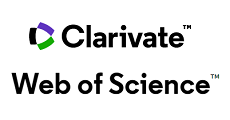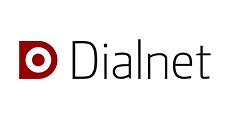Utilización de matrices dispersas en el Método de los Elementos Finitos
DOI:
https://doi.org/10.15446/ing.investig.n27.20759Keywords:
Método de los elementos finitos, Matrices dispersas, Esfuerzos (es)Finite element method, Sparse matrices, Efforts (en)
Downloads
El presente es el primero de una serie de artículos relacionados con el tema de los Elementos Finitos y su aplicación en el campo de la ingeniería, y en particular de la Ingeniería Geotécnica, que publicaremos en esta sección.
En el primero de ellos estamos presentando el método ilustrándolo con un ejemplo muy sencillo en el que se determinan los esfuerzos de una viga constituida por un material CHILE bajo el supuesto de deformaciones planas y esfuerzos biaxiales.
La finalidad de este primer artículo es mostrar las ventajas que ofrecen las matrices dispersas para el manejo de la matriz banda que genera un tipo de problemas como el planteado, frente a los sistemas tradicionales de Choleski-Jordan y Gauss-Seidel, entre otros.
Posteriores artículos ilustraran el método para materiales CHOLE (Continuos, Homogéneos, Ortotrópicos y linealmente elásticos) y otros tipos de materiales en donde el comportamiento elástico no cumple con la linearidad.
This paper is the first of a series of articles relating with the topic of Finite Elements and their application to the engineering field and in particular to geotechnical engineering, which will be published in this section. In this first article we are presenting the method, ilustrating a very simple example in wich the stresses are determined in a beam made with a CHILE material (continuos, homogeneous, isotropic, linearly elastic), under the assumption of planar deformations and biaxial stresses. The objetive of the this first article is to show the advantages that the disperse matrices offer in the handling of the banded matrices that is generated by the type of problem presented, with respect to the traditional methods of Choleski-Jordan and Gauss-Seidel, amongst others. Future articles will illustrate the method for CHOLE materials (Continuos, homogeneous, orthotropic and linearly elastic) and other type of materials where the elastic behaviour does not comply with linearity.
References
Abel, J. Introduction to the Finite Element Method. New York; Van Nostrand Reinhold Company, 1985, 219 p.
Alarcón A.E., Álvarez R., Calculo matricial de estructuras, Barcelona: Reverté S.A, 1986, 410 p.
Becerra C., Estructuras de datos en disco duro. Bogotá: computador Ltda. 1990 366 p.
Becerra C., Lenguaje C. El nuevo concepto (4a. ed.) Bogotá. Por computador Ltda., 1990, 532 p.
Burden L.R., Faires J.D., Análisis numérico. México: Grupo Editorial Iberiamérica S.A., 1985. 274 p.
C.A. Debria, JJ. Connor. Métodos de los elementos finitos en la Ingeniería Civil, España: Edix S.A.,1975 279 p.
Cohn D. Autocad. Addison - Wesley Publishing Company. 1988.
Cook R. Malkus D. Concepts and Applications of Finite Element Analysis. Jonh Wiley, 1989.
Gouri Dhatt, Gilbert T. The finite element method displayed. New York: A Wiley-interscience publication, 1985,509 p.
Jamsa, K. Nameroff. S. Turbo Pascal programmer’s library. USA.: McGraw-Hill, 1987. 539 p
Knight. R., Using Autocad. Que Corporation, 1989.
Livesley. R. K. Elementos finitos Introducción para Ingenieros. México D.F.: Limusa S.A., 1988, 224 p.
Mora H. Aplicación del método de Gradiente conjugado al programa PORTRECT. Universidad Nacional de Colombia, Tesis de Grado. 1984.
Parra F. Notas sobre la solución de problemas de Mecánica del continuo. Universidad Nacional. 1986.
Sagerlind L. Applied Finite Element Analysis, John Wiley and Sons. 1984.
Schildt, H., Turbo C The complete reference (2nd Ed). USA: McGraw-Hill, 1990, 749 p.
How to Cite
APA
ACM
ACS
ABNT
Chicago
Harvard
IEEE
MLA
Turabian
Vancouver
Download Citation
CrossRef Cited-by
Dimensions
PlumX
Article abstract page views
Downloads
License
Copyright (c) 1992 Gino Natale Primero, Jesús Rafael García Núñez, Alvaro Correa Arroyave

This work is licensed under a Creative Commons Attribution 4.0 International License.
The authors or holders of the copyright for each article hereby confer exclusive, limited and free authorization on the Universidad Nacional de Colombia's journal Ingeniería e Investigación concerning the aforementioned article which, once it has been evaluated and approved, will be submitted for publication, in line with the following items:
1. The version which has been corrected according to the evaluators' suggestions will be remitted and it will be made clear whether the aforementioned article is an unedited document regarding which the rights to be authorized are held and total responsibility will be assumed by the authors for the content of the work being submitted to Ingeniería e Investigación, the Universidad Nacional de Colombia and third-parties;
2. The authorization conferred on the journal will come into force from the date on which it is included in the respective volume and issue of Ingeniería e Investigación in the Open Journal Systems and on the journal's main page (https://revistas.unal.edu.co/index.php/ingeinv), as well as in different databases and indices in which the publication is indexed;
3. The authors authorize the Universidad Nacional de Colombia's journal Ingeniería e Investigación to publish the document in whatever required format (printed, digital, electronic or whatsoever known or yet to be discovered form) and authorize Ingeniería e Investigación to include the work in any indices and/or search engines deemed necessary for promoting its diffusion;
4. The authors accept that such authorization is given free of charge and they, therefore, waive any right to receive remuneration from the publication, distribution, public communication and any use whatsoever referred to in the terms of this authorization.




























